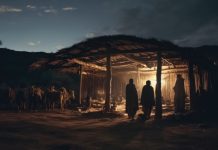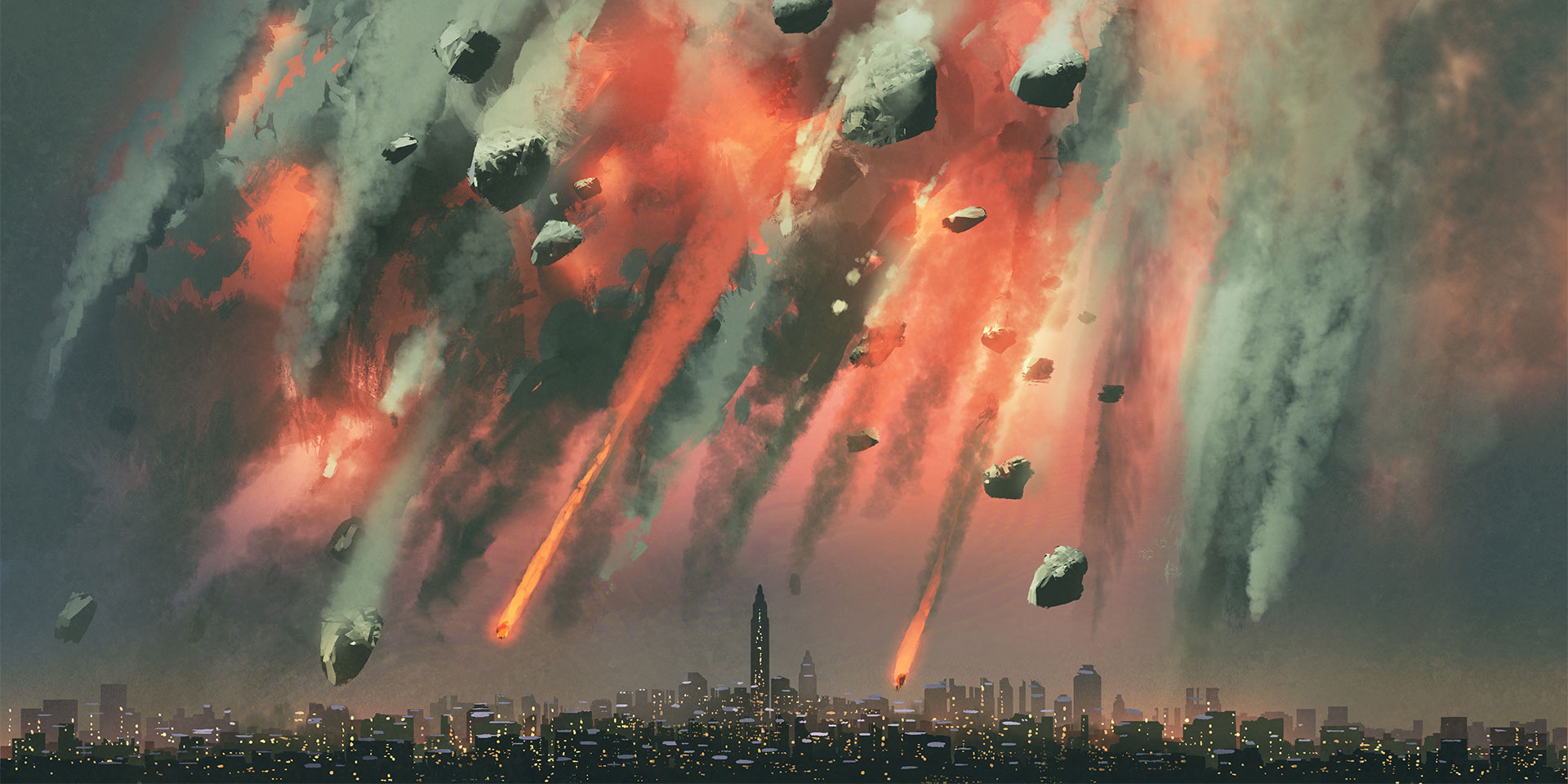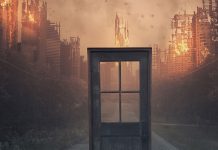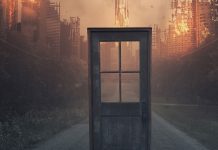The image of an apocalypse generated by a microscopic coronavirus has been sketched more than once by the press in the past few weeks.
“This Is Not the Apocalypse You Were Looking For”[1] is the title of an article in Wired, an American magazine. In it, Laurie Penny wonders how the COVID-19 crisis caught us so off-guard, when we had been experiencing, through phone and computer screens, one apocalypse after another, oscillating between fear and exhaustion.
The end people have been writing so much about since the outbreak of the pandemic is the end of a normality and predictability that was as relative as it was comfortable. Life will never be the same. Many articles written in the last few weeks have expressed this sentiment in different ways.
COVID-19 is a kind of 9/11 for the current generation but with deeper consequences, because, “in many ways, life will never be the same”, Forbes has noted.
Four to five years from now, “not one single aspect of our lives will be the same. It’s almost impossible to really fully envision what that will look like”, Pulitzer prize-winning public health journalist Laurie Garrett recently wrote for CNN.
Thus, we are facing an uncomfortable end, not of humankind, but of the world as we know it. We might still be able to navigate the new world if we happen to be on the lucky side of the planet.
Self-induced apocalypse
In our modern society we have fabricated what the Romanian historian Lucian Boia called “ends of the world for human use”[2]. Almost nobody believes that the planet will be destroyed by an external force. However, the broader picture reflected in the media shows that many seem to be experiencing the anguish of a coming destruction, caused exclusively by humans.
Against the background of global warming, the feeling arises that we will experience an ongoing apocalypse during which disasters pile up until the planet is only partially inhabited.
“Apocalypse Becomes the New Normal” – is the title of a New York Times article, which lists a series of recent disasters, including the large fires in Australia.
Journalist Paul Kruger remembers the not-so-long gone days when the press avoided the subject of climate change. There has been a definite change to this, and he regards this shift in attitude as a sign of an increase of public interest in the environment.
Expert studies—which are then reported on by the media—often contain apocalyptic expressions and harsh warnings when it comes to the consequences humanity will face if it does not manage to counteract the effects of climate change. A study from 2019, in which more than 11 000 experts collaborated, talks about the failure of states to cope with environmental problems, and about “incalculable sufferings” on the horizon as the climate crisis worsens. The study says the fate of humanity will be threatened in the coming years.
At the beginning of 2020, the Bulletin of the Atomic Scientists from the University of Chicago, moved the Doomsday Clock to only 100 seconds away from midnight (from 2 minutes in 2019), to reflect the threats caused by nuclear weapons and global warming. The midnight point on this clock means the end of the world.
John Sutter writes for CNN that the only option mankind has left is to choose, and that the only bright side to this story, is for young people to join efforts to put pressure on leaders, delaying the implementation of firm measures. Fortunately, they have already started to do this.
No matter how bleak a man-made apocalypse could be there are always reasons to relax, some say, because, unlike an end that cannot be stopped, a man-made apocalypse has a solution which comes from the same hands that generated the crisis in the first place.
The avoidable apocalypse
Beyond the threats that are but “figments of cultural and historical pessimism” (8), there are real ones which we should not treat as “apocalypses-in-waiting”, but as solvable problems. This is what Steven Pinker, psychology professor at Harvard University writes for The Globe and Mail.
Nowadays, we even have the ability to follow the trajectory of asteroids and take steps to prevent a possible collision with Earth. Therefore, the human power to prevent annihilation is no longer a pipe dream. All we need to prevent future natural disasters is found in an utterly unmagical recipe: “…persuasion, pressure and will”, as Pinker says.
If the apocalypse is indeed coming, scientific predictions point to it happening in the very distant future, Forbes assures us. Until then, the author of the article, physics professor Ethan Siegel—who has received numerous awards for his work—says we must focus our attention on something else. Science provides us with information to make people’s lives as safe and prosperous as possible, and so a scientifically literate society may hope to delay “that first ‘end’ as far into the future as possible”.
The Biblical apocalypse reinterpreted
In general, the press has criticized the apocalypse apologists who claimed COVID-19 was a divine punishment, an apocalyptic plague, and a sign of the end. Many journalists have, however, mixed together all kinds of messages about the future—from statements of biblical scale to clairvoyant predictions.
In his article, Sigel rejects everything he calls “speculations and conspiracies” regarding an imminent end, arguing that we live in a society which is scientifically grounded, not one lead by myths and mysticism. Pinker believes that all the prophecies about a judgement day are, from the time of the Jewish prophets onwards, “raw material for clairvoyants, parapsychologists, mystics, televangelists, sects, gurus, founders of religion and people walking on the sidewalks with billboards that read: ‘Repent!’”. And at the end, some predictably urge us to purchase a Bible, Pinker slyly says.
We are experiencing a pandemic of predictions about the end of the world, which is more difficult to shake off than the coronavirus, writes CNN journalist John Blake, mocking those who link events such as the pandemic, the fires in Australia, or the locust invasion in Africa, proving that they’ve thus emptied “their minds along with supermarket shelves”.
Blake writes that these social media prophets had better enter a well-deserved quarantine, having received knowledge which even the most revered figures of the religious world do not claim to have. He quotes Ulrick Lehner, a Catholic theologian from the University of Notre Dame in Indiana, who says social media preachers linking Covid-19 with the end of the world seem to be more informed than the angels around God’s throne. (Matthew 24:36)
Like Pinker, Blake creates an indigestible mixture of opposing views in his article. He briefly analyses a few cases before rejecting them—from the predictions of a famous medium-like Sylvia Brown, to the posts of a Texan pastor who apparently talks about the end of the world from the hope-infused perspective of the Bible. Blake closes his article with Lehner’s perspective, which accuses apologists of not knowing the book of Revelation. In his view, this is not a prophetic book, but one meant to comfort the first Christians and strengthen their faith in the triumph of good. This is precisely what we also need today: solace, not prophecy, Blake concludes.
Digestible apocalypse makers
“Each time the end of the world is announced, I am very calm because I know what happened with the previous ends of the world, namely, nothing”[3], said historian Lucian Boia in an interview.
Novelist Philip Roth, in conversation with Milan Kundera, questioned his fellow novelist about the veracity of the idea of end of the world, seeing that this idea is an ancient one. “If a fear is present in the human mind for millennia”, Kundera said, “there must be something there.”[4]
We do not like the idea of the end of the world, but at times, in the midst of successive crises, this idea has a resurgence. Therefore, we try to give the apocalypse as pacific an outline as possible. We say it is improbable, or scientifically predictable, and thus controllable, or at least projectable into a future that is far too distant to worry about. A man-made apocalypse, untouched by any extra-terrestrial intervention? That allows for some relaxation.
It is, in fact, a pocket apocalypse, which we can correct, mend, and interpret, and which is only useful for the thrills it gives us while we contemplate it in movies and books, happy that we are apparently a universe away from it.
Above all, it is an event in which we are involved as a human race, but not individually. It would therefore be a possible show which we could attend without any kind of personal introspection necessary.
Dilema Veche magazine launched a challenge for a group of writers which asked: “How would you spend the end of the world?”[5]. All the answers wove together an enchanting web of humour, gestures of light opposition, peaceful goodbyes, celebrations of all that was beautiful or what had not yet come to be; walks among both useless things and dear places, a last cruise on the Rhine, applause and shouts of “Encore!”, Swiss chocolate, wine, ice cream, movies with happy endings, and of course, watching a live broadcast of the “event”.
Perhaps not everyone has the imagination or stylistic skill to allow them to describe a personal end as richly as others can. What is obvious, however, is that many believe that the apocalypse has everything to do with an external event, and nothing to do with character, choices, or one’s own preparation for it (Matthew 24:44).
Unlike the fixable, bitter-sweet apocalypses made by man, the end of the world as the Bible presents it might seem mystical, alarming, even terrifying. But only terrifying to some. Those who know its Author, and the love and hope in the story of eternity He wrote in His flesh and blood for us, the planet’s puniest inhabitants, look forward to the end of this sinful world.
Carmen Lăiu is a writer for ST Network and Semnele timpului.



















